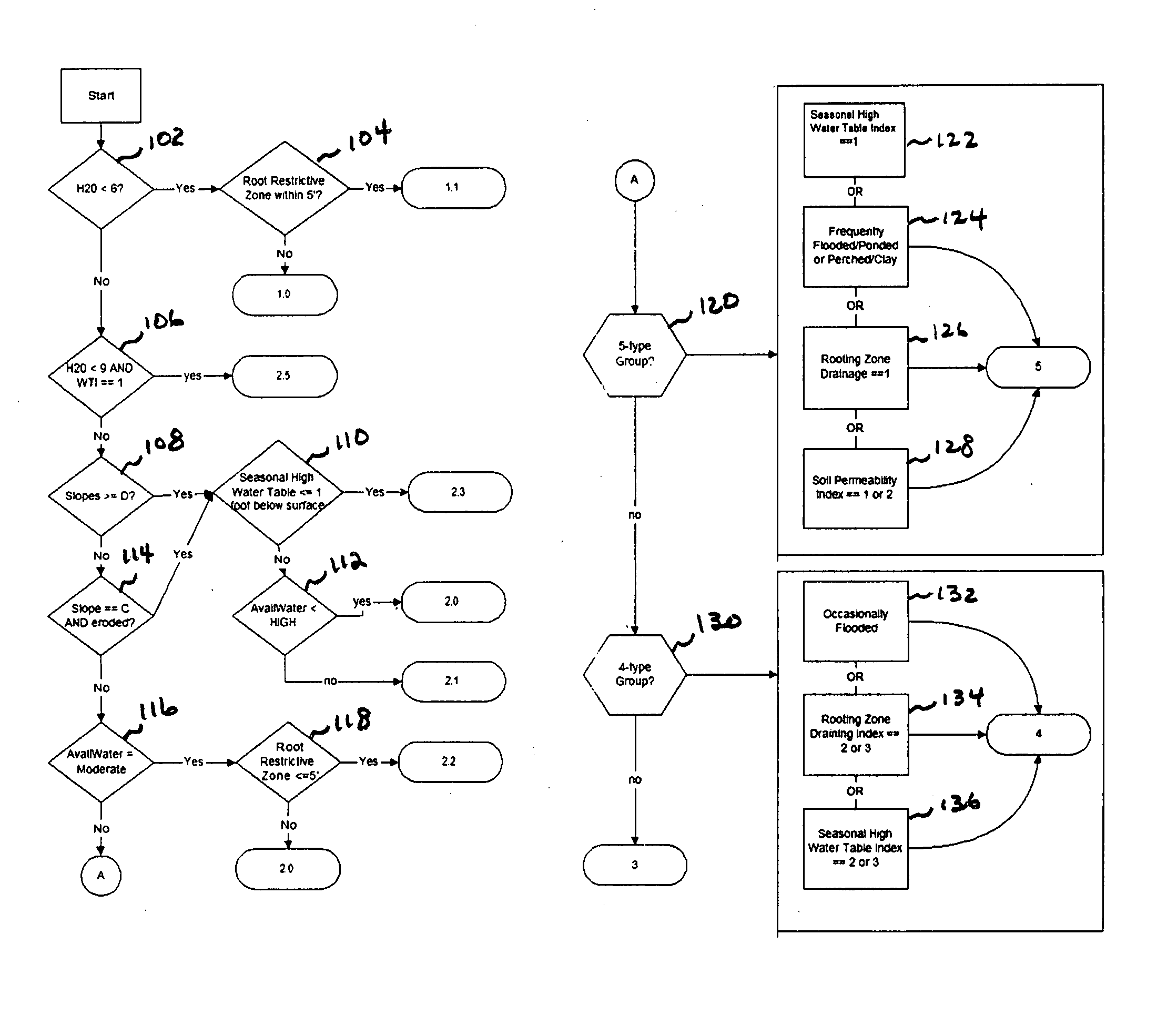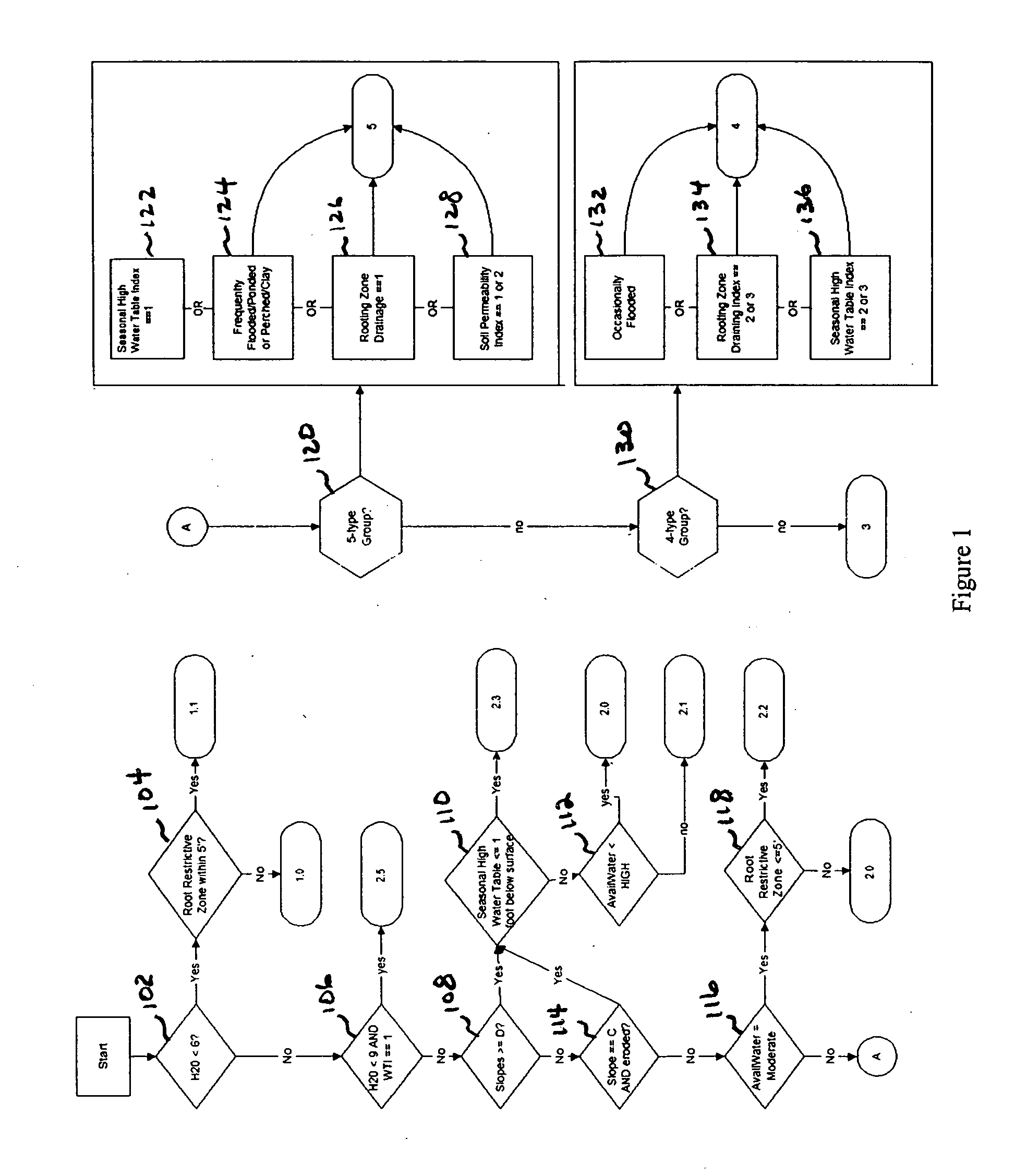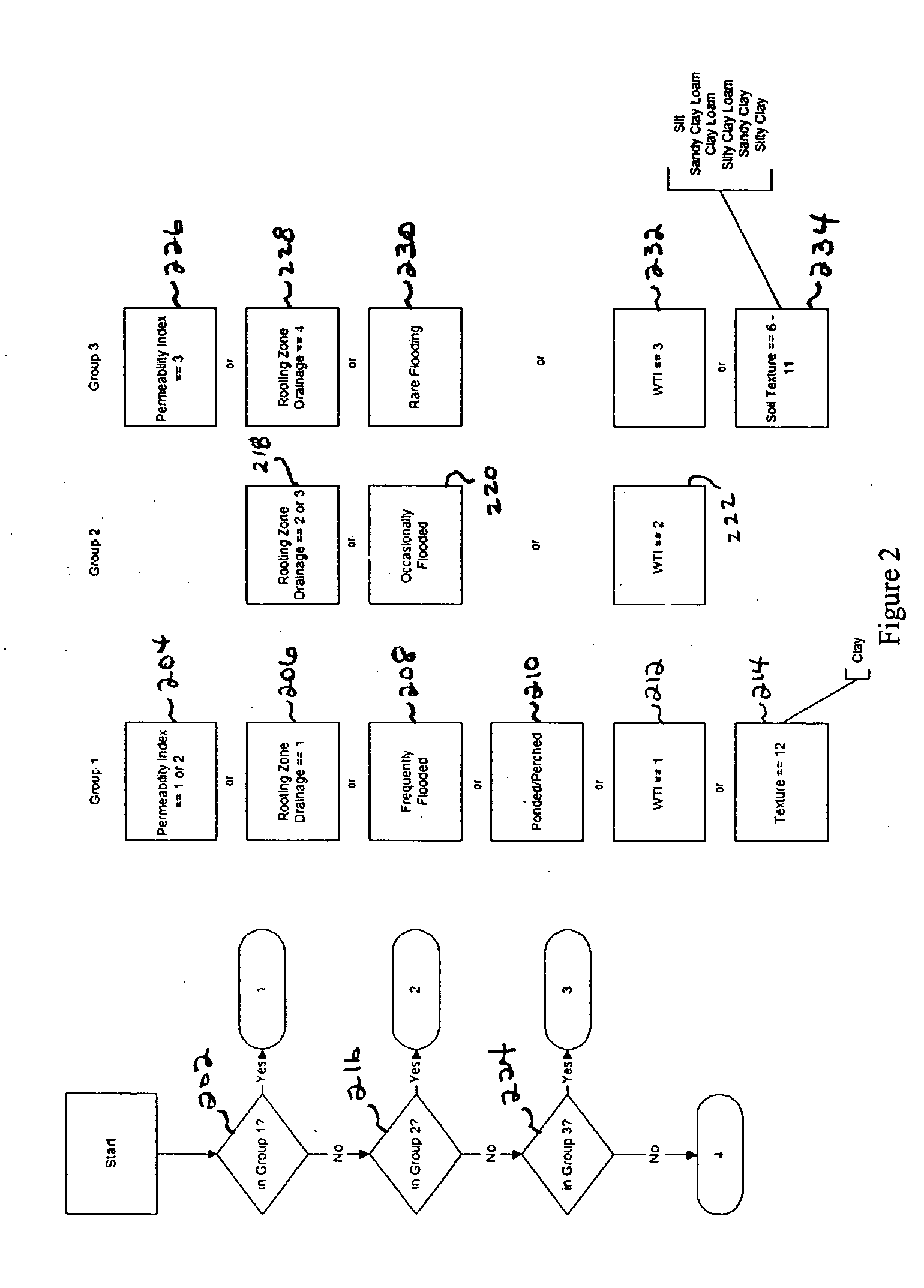Method for selecting crop varieties
- Summary
- Abstract
- Description
- Claims
- Application Information
AI Technical Summary
Benefits of technology
Problems solved by technology
Method used
Image
Examples
example 1
First Protocol for Determining Seed Placement Categories.
Corn:
[0275] 1. Soils determined to have 6 inches and less plant available water from column H2O are assigned to Corn Placement Category 1, Drought Probable.
[0276] 2. All soils identified as “Frequently Flooded” are annotated as such in the Name column. This annotation is used to assign that soil to Corn Placement Category 5, Probably Poorly Drained.
[0277] 3. All soils identified as “Ponded” are annotated as such in the Name column. That annotation is used to designate that soil to Corn Placement Category 5, Probably Poorly Drained.
[0278] 4. All soils identified as “perched” are annotated as such in the Name column. That annotation is used to assign that soil to Corn Placement Category 5, Probably Poorly Drained.
[0279] 5. All soils designated as “clay” texture in the top (first) profile in the Profile column are assigned to Corn Placement Category, Probably Poorly Drained.
[0280] 6. From the present Natural Root Drainag...
example 2
Protocol for Determining Seed Placement Categories
[0337] Another embodiment of the present method is disclosed using FIGS. 1 and 2.
[0338] Corn:
[0339] A flow chart of the logic used in determining Corn Seed Placement Categories is shown in FIG. 1. Initially a decision is made at 102. If the Plant Available Water is less than six inches (i.e., the Available Water Capacity Index is “1” or “2”) and the Root Restrictive Zone (obtained from, e.g., soil survey data) is within five feet of the soil surface, determined at 104, the Seed Placement Category is “1.1.” If the decision at 104 is “no,” the Seed Placement Category is “1.0.” If the Plant Available Water is between 6 inches and 9 inches (i.e., Available Water Capacity Index is “3”) and the Water Table Index is “1,” as determined at 106, the Seed Placement Category is 2.5. If the decisions at 102 and 106 are both negative, and the Slope Index is D, E, or F, as determined at 108, and the Water Table Index is “1” or “2” (e.g., Seasona...
PUM
 Login to View More
Login to View More Abstract
Description
Claims
Application Information
 Login to View More
Login to View More - R&D
- Intellectual Property
- Life Sciences
- Materials
- Tech Scout
- Unparalleled Data Quality
- Higher Quality Content
- 60% Fewer Hallucinations
Browse by: Latest US Patents, China's latest patents, Technical Efficacy Thesaurus, Application Domain, Technology Topic, Popular Technical Reports.
© 2025 PatSnap. All rights reserved.Legal|Privacy policy|Modern Slavery Act Transparency Statement|Sitemap|About US| Contact US: help@patsnap.com



